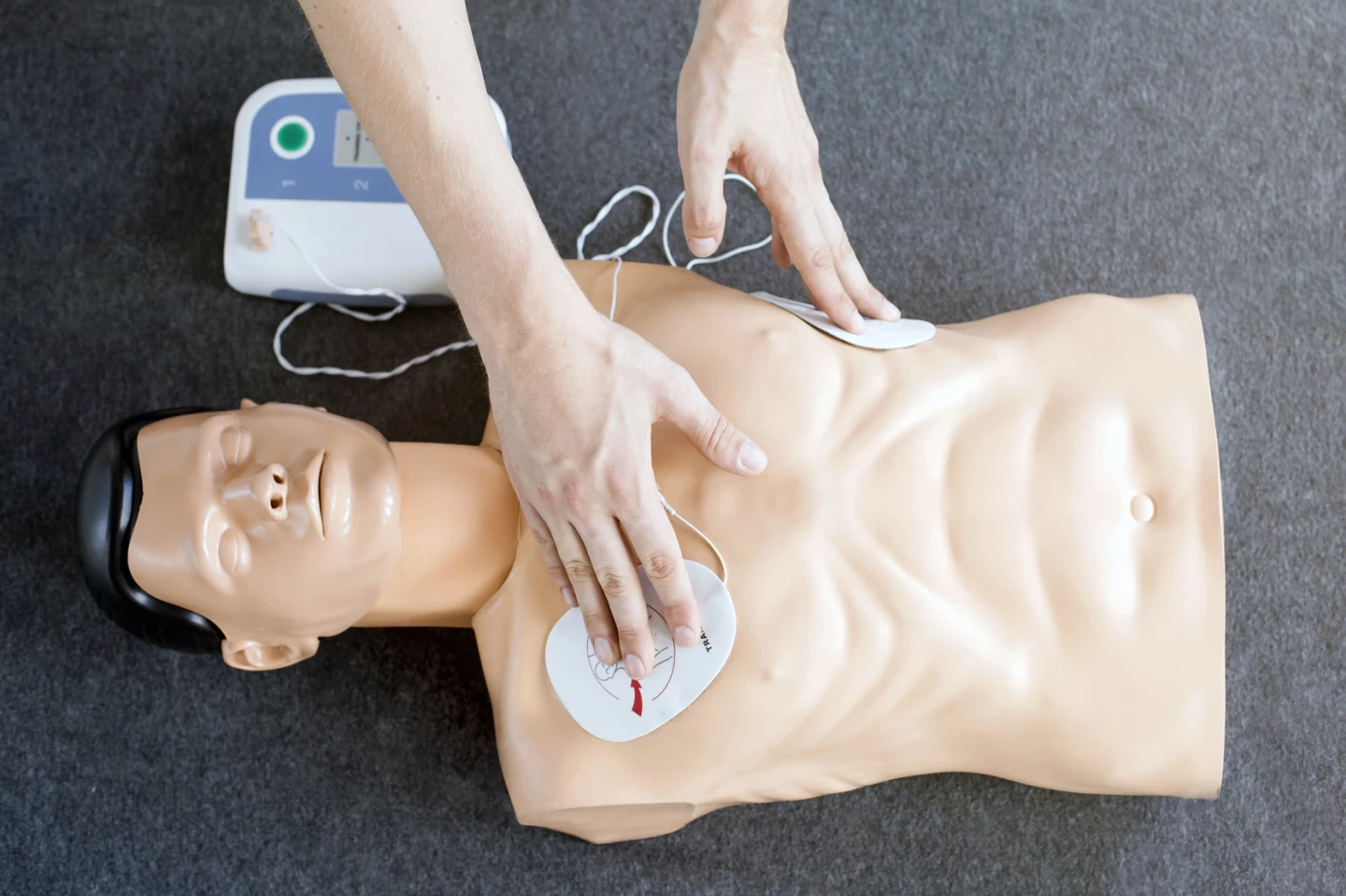Placing defibrillator pads on the chest and back, rather than the usual method of putting two on the chest, increases the odds of surviving an out-of-hospital cardiac arrest by more than two-and-a-half times, according to a new study.
Sadly, the odds of surviving an out-of-hospital cardiac arrest (OHCA) are low. While circulation is returned in 30% of cases, only 10% survive. However, when a cardiac arrest is due to ‘shockable’ heart arrhythmias, those odds are improved by rapid defibrillation – applying electrode pads to the chest to deliver an electric jolt to shock the heart back into normal rhythm.
Commonly, in adults, one defibrillator pad is placed on the right of the chest, just below the collarbone and the other on the lower left side, underneath the armpit. This is known as anterior-lateral (AL) positioning. But would using a different pad placement improve the outcome after a cardiac arrest? That’s what researchers investigated in a new study led by the Oregon Health and Science University (OHSU).
“The less time that you’re in cardiac arrest, the better,” said Joshua Lupton, MD, assistant professor of emergency medicine at the OHSU School of Medicine and the study’s lead author. “The longer your brain has low blood flow, the lower your chances of having a good outcome.”
The researchers examined data from the Portland Cardiac Arrest Epidemiologic Registry between 2019 and 2023, which comprehensively recorded the placement position of defibrillation pads in patients with OHCA whose hearts were in abnormal rhythms, either ventricular fibrillation (VF) or pulseless ventricular tachycardia (pVT).

Heart rhythms associated with cardiac arrest are divided into two groups: shockable rhythms (VF or pVT) and non-shockable rhythms (asystole and pulseless electrical activity or PEA). In the latter group, applying an electric shock will not help. Asystole means the heart’s electrical and mechanical activity has shut down, and there’s no heartbeat (colloquially called ‘flatlining’). In PEA, electrical activity is too weak to pump blood throughout the body. With shockable rhythms, electrical conduction through the heart is intact, but its lower chambers are contracting too fast to pump blood properly (pVT) or are pumping irregularly (VF).
A total of 255 patients with OHCA were included in the study; their mean age was 66. The researchers looked at defibrillator pad positioning and outcomes after defibrillation. The primary outcome was a return of spontaneous circulation (ROSC). Thirty-eight percent of patients’ pads were positioned in an AL configuration; 62% in an anterior-posterior configuration, where one pad is placed on the chest over the heart and one on the back. Patients with AP pad placement had 2.64-fold greater odds of ROSC compared to AL placement.
“The key is, you want energy that goes from one pad to the other through the heart,” said Mohamud Daya, MD, professor of emergency medicine at the OHSU School of Medicine and corresponding author of the study.
The researchers’ findings suggest that ‘sandwiching’ the heart between the two defib pads, front and back, may deliver electrical current more broadly to the heart, making resuscitation more effective. However, they note that AP positioning might not always be possible.
“It can be hard to roll people,” Daya said. “Emergency medical responders can often do it, but the lay public may not be able to move a person. It’s also important to deliver the electrical current as quickly as possible.”
Lupton, who is one of the few who’ve survived an out-of-hospital cardiac arrest thanks to defibrillation, was pleasantly surprised by the study’s findings.
“I didn’t expect to see such a big difference,” he said. “The fact that we did may light a fire in the medical community to fund some additional research to learn more.”
The study was published in the journal JAMA Network Open.
Source: OHSU






